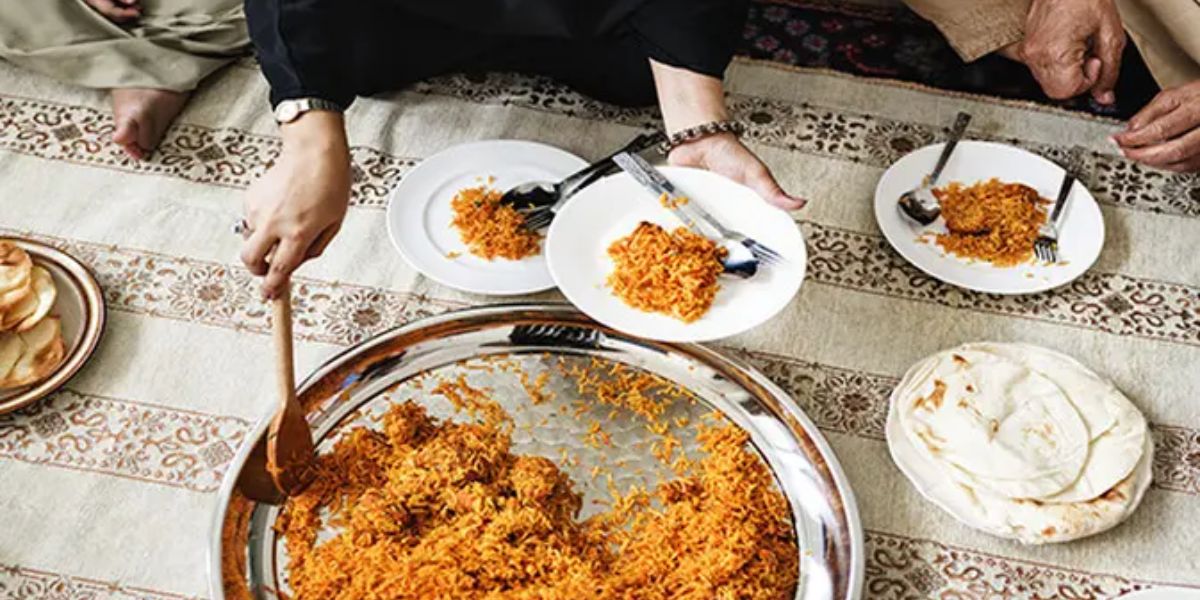Want to Look Young Forever While Earning Rewards? Here Are the Benefits of Syawal Fasting for Anti-Aging
Fasting is not only beneficial for overall health but also has anti-aging effects that can help keep body cells healthy and prolong cell life.

Kapanlagi.com - Eid is a moment eagerly awaited by many, especially because of the various delicious dishes that tempt the palate. However, for those suffering from diabetes, this celebration can pose its own challenges. Dishes rich in carbohydrates and sugar can trigger spikes in blood sugar levels. Therefore, it is important to manage your eating patterns wisely to maintain health.
The first step to take is to plan your meals carefully. Create a healthy meal plan that includes the types and portions of food you will consume. This way, you can avoid overeating and choose healthier options. Plan to eat when you are not overly hungry so that you can assess food more objectively.
If you are not cooking yourself, don’t hesitate to ask the host about the menu that will be served. By knowing the menu in advance, you can prepare yourself and choose dishes that fit your health needs.
When celebrating Eid, start by enjoying dishes rich in fiber such as fresh fruits and green vegetables. Fiber plays an important role in slowing down the absorption of sugar into the bloodstream, thereby helping to maintain stable blood sugar levels. Some recommended fruit options are apples and pears, while green vegetables are also highly recommended for consumption.
In addition, it is important to limit the consumption of sweet and fatty foods. Although dishes like rendang, opor, and Eid cakes may seem tempting, it is better to choose foods with lower sugar content. If you want to enjoy something sweet, it is better to choose fresh fruit juice without added sugar or water with fruit slices (infused water) for a refreshing taste sensation.
Controlling portion sizes is also crucial. Avoid the habit of overeating which can burden the body. Fill your plate with a variety of vegetables to provide a feeling of fullness without adding many calories. Try to eat in smaller portions but more frequently, about 5-6 times a day, to help maintain stable blood sugar levels and boost your body’s metabolism.
To maintain the body's health, it is very important to ensure we drink enough water, about eight glasses a day. This helps the body eliminate toxins and keeps us hydrated. Additionally, maintaining a regular eating pattern is also very important. Try to eat three times a day with three snacks in between meal times.
For optimal digestion, try to chew food slowly. Don't forget, physical activity is equally important. Engage in light exercise such as walking for at least 30 minutes every day. Regular exercise not only helps with weight loss but also improves insulin sensitivity, which is very beneficial for overall health.
After celebrating Eid, it is advisable to start reducing the consumption of sugar and processed carbohydrates. This step is important to help rebalance the blood sugar levels in our body. Start increasing your intake of vegetables and fruits to get the fiber and nutrients that are important for health. Additionally, try to reduce the consumption of processed and ready-to-eat foods that are usually high in sodium, sugar, and fat.
Continue to maintain the habit of drinking enough water so that the body can detoxify properly. Also, ensure to consume a balanced and nutritious diet to keep nutrient balance intact.
For those of you who have diabetes, it is very important to consult with a doctor or nutritionist to create a meal plan that suits your needs. Regularly monitor your blood sugar levels, especially after consuming certain foods. Do not hesitate to seek medical help if you experience any unusual symptoms.
Breakfast
Lunch
Afternoon Snack
Dinner
Beverages
What should be done if blood sugar is high after Eid?
Consult a doctor immediately and improve your diet by reducing sugar and refined carbohydrate intake.
How to choose healthy food during Eid?
Choose foods that are high in fiber, low in sugar, and limit the consumption of fatty foods.
Is exercise important after eating during Eid?
Yes, light physical activity after meals can help lower blood sugar levels.
How much water should be consumed each day?
It is recommended to drink about 8 glasses of water daily to maintain hydration.
(kpl/mni)
Cobain For You Page (FYP) Yang kamu suka ada di sini,
lihat isinya
Fasting is not only beneficial for overall health but also has anti-aging effects that can help keep body cells healthy and prolong cell life.
Learn the procedures for repaying fasting debts of Ramadan, either through qadha (replacing the fast) or fidyah (penalty), as well as the differences between the two.
Intensive social visits, crowds, and social demands can lead to mental overstimulation, causing someone to feel burdened or emotionally exhausted.
Syifa Hadju wears a long dress with an elegant and charming look, perfect as an inspiration for an elegant style.
Recommendations for the best Korean zombie-themed dramas, from KINGDOM to ALL OF US ARE DEAD. Tension, action, and emotional drama all in one story!
Isyana Sarasvati dazzles with bold makeup that is always unique and edgy in every appearance.
Changes in eating patterns and activity during Ramadan often impact the body's metabolism, making it a unique challenge to maintain ideal weight afterwards.
Avoid these financial mistakes to keep your finances stable after Eid and prevent bankruptcy.
These songs took years before they were finally released. What are the reasons? Check out the story behind them!
Ashanty looks stunning in various kebaya models from pastel to classic batik. Check out her inspirations here.
Five latest Korean dramas are set to air in APRIL 2025! Check out the complete list along with their airing schedule.
The MIND diet is trending in South Korea! This eating pattern is claimed to slow down aging and maintain brain health.